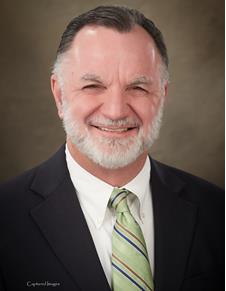
Real Estate Taxes
In my last column, I briefly mentioned the role higher taxes play in real estate values. When young workers are straining to afford a house to fit their families, the associated mil levy can make a big difference in the monthly payment, and whether or not they can make it work. Additionally, if they paid more for the house than the last owner, they can anticipate a tax increase in the near future.
High taxes is a relative term, so a comparison of 10 counties in SEK are in order. They are: Allen, Anderson, Bourbon, Cherokee, Crawford, Labette, Linn, Montgomery, Neosho, and Woodson. Besides geography, these counties have another common denominator: they all lost population from 2010 to 2018, 4.41% as a whole (Bourbon was 3.43%).
Here is the good news for Bourbon County: in 2018, our bond indebtedness was $2.3 million; the average for the 10 counties: $12.9 million. One would think Crawford County would contribute to a higher average, but their number was $2.4 million. Both Anderson and Neosho had indebtedness over $46 million. We are in good shape, relatively speaking.
The bad news: our average mil levy for 2018 was 179.27; the 10 county average was 157.67. The high was Labette at 187.00 (we are number 2, after holding the top spot for several years); the low was Linn at 115.30. On a $100,000, home a Bourbon County resident will pay $1,630, on average; the average Kansan pays $1,370 and the average US resident pays $1,070. We are at a competitive disadvantage, especially if one adds in school bonds and the community college. Commissioners have done what they can to hold the line, but declining population and increasing costs are a toxic mixture.
One of the reasons our mil levy is so high is our assessed valuation is so low. We are over $62 million lower than the 10 county average (only the rural counties of Anderson and Woodson are lower), and total tax collected is $6.7 million below the average.
What can we do? Play offense first: We can afford to issue debt to take care of roads and bridges in our communities. Interest on indebtedness is lower than the rate of inflation, which means it cost more to wait on repairs and improvements compared to borrowing the money now. This will help us attract new residents and businesses.
The defense: look for ways to be more efficient in government services by looking for duplications of effort and expense between jurisdictions in our county, and look for ways to cooperate. We have to get past our parochial divisions and lack of trust; grudges are too expensive and may prove to be ruinous for us. Lower the cost, and lower the mil.
Don’t punish people for building new properties or improving older ones. We have a rebate plan in place, and we need to look for more incentives to encourage real estate investments.
We simply have to look at ourselves differently, and in some cases, change the way we look at our neighbors in this county. Like it or not, our fates are joined at the hip. Let’s realize it and act like it.
We have talked to the County Commissioners about putting the turbine money towards the mill to help with the property tax problem.So far we can not get a straight answer about that but im pretty sure it is a NO.Last I knew they were talking about using the PILOT money to build more ball fields.When the county receives more money they spend more money instead of putting the money towards lowering taxes.
Sound advice and information. We citizens need to review the budgets of FSCC and USD 234 and USD 235 and expect the boards and administrators to work at decreasing their costs so we can experience less taxation. Property owners are getting taxed out of the county. We are in this together to survive as a rural community and I’d like to see our county thrive!